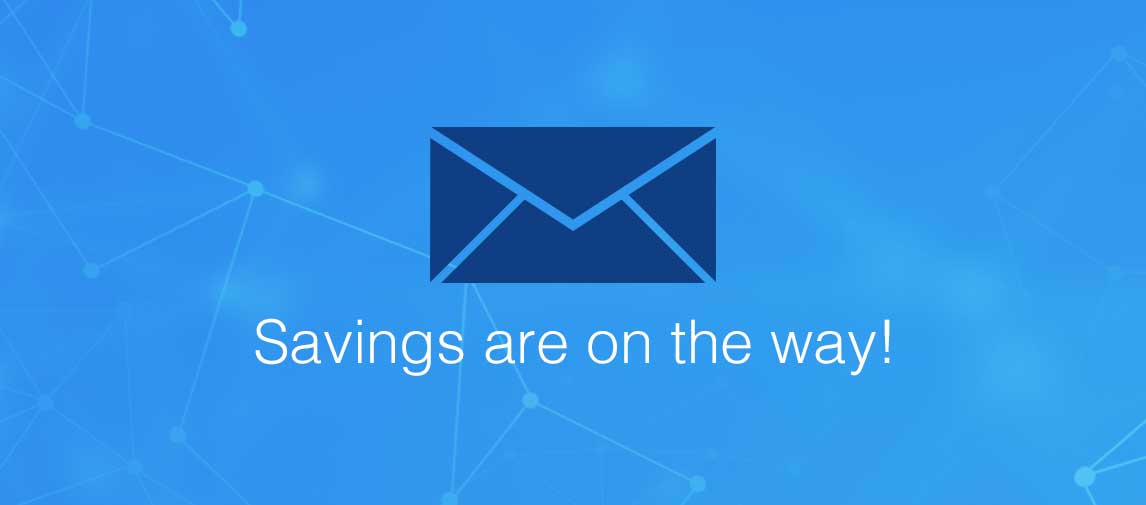title
Please take a moment to fill out this form. We will get back to you as soon as possible.
All fields marked with an asterisk (*) are mandatory.
Manage Financial Operations with Dynamics 365 Finance
Course Description
Overview
This course covers the financial aspects of Dynamics 365: configure and use essential financial components, accounts payable, accounts receivable, collections, budgeting, fixed assets, and additional functionality.Objectives
- The benefits of Dynamics 365 Finance.
- An overview of features in Finance.
- Different types of currencies in Finance.
- The concept of triangulation currency.
- How to set up legal entity currencies and conversions.
- How to configure exchange rate providers.
- How to import exchange rates from providers.
- Differentiate between ledger and fiscal calendars.
- Configure and set up fiscal calendars, years, and periods.
- Create and use date intervals.
Audience
Prerequisites
-
Before attending this course, students should have general knowledge of the following topics:
- Basic understanding of finance and accounting processes
- Ability to use Finance for basic processing
- General knowledge of basic navigation within Finance
- Knowledge of how Dynamics 365 apps are used
- Basic understanding of cloud concepts, and Microsoft Power Platform
Topics
- Get started with Dynamics 365 Finance
- Introduction
- Benefits of Dynamics 365 Finance
- Overview
- General ledger
- Cash and bank management
- Tax
- Accounts payable
- Accounts receivable
- Credit and collections
- Budgeting
- Fixed assets
- Cost accounting
- Electronic invoicing
- Lab - Explore Dynamics 365 Finance
- Check your knowledge
- Summary
- Configure currencies in Dynamics 365 Finance
- Introduction
- Set up currencies and conversions
- Configure and import currency exchange rates
- Lab - Import exchange rates
- Check your knowledge
- Summary
- Create fiscal calendars, years, and periods in Dynamics 365 Finance
- Introduction
- Fiscal calendars, fiscal years, and periods
- Create fiscal calendars, years and periods
- Select a fiscal calendar
- Define budget cycle time spans
- Maintain periods for your organization
- Create date intervals
- Lab - Work with the fiscal calendar, year, and periods
- Check your knowledge
- Summary
- Get started with chart of accounts in Dynamics 365 Finance
- Introduction
- Plan your chart of accounts
- Multiple chart of accounts
- Set up a chart of accounts
- Lab - Create a new main account
- Check your knowledge
- Summary
- Set up chart of accounts in Dynamics 365 Finance
- Introduction
- Main account categories
- Main account information
- Allocation terms
- Main account validation options
- Main account closing options
- Financial tags
- Accounts for automatic transactions
- Lab - Create a main account category in the chart of accounts
- Check your knowledge
- Summary
- Set up financial dimensions in Dynamics 365 Finance
- Introduction
- Define and set up financial dimensions
- Create a custom financial dimension
- Create an entity-backed financial dimension
- Activate and delete financial dimensions
- Default dimension values
- Derived dimensions
- Set up financial dimension templates and sets
- Define and set up account structure and advanced rules
- Ledger account aliases
- Lab - Set up an account structure
- Check your knowledge
- Summary
- Set up ledgers and journals in Dynamics 365 Finance
- Introduction
- Understand the different types of journals and their setup
- Describe use cases for periodic journals
- Configure ledger and journal setup
- Discover options for implementing voucher numbers in journals
- Set up journal approvals
- Configure and use journals
- Publish journal lines to Microsoft Excel
- Reverse journal posting
- Set up batch transfer rules
- Lab - Configure ledger and journal setup
- Check your knowledge
- Summary
- Perform general ledger daily procedures in Dynamics 365 Finance
- Introduction
- Using balance control accounts
- Process a journal entry
- Work with general ledger processes
- Ledger settlements
- Create templates to edit journals in Microsoft Excel
- Create voucher templates
- Set up journal controls
- Exercise - Create and use a voucher template
- Check your knowledge
- Summary
- Intercompany accounting in Dynamics 365 Finance
- Introduction
- Set up intercompany accounting
- Post intercompany journals
- Trace an intercompany entry
- Lab - Set up and use intercompany accounting
- Check your knowledge
- Summary
- Configure ledger allocations and accruals in Dynamics 365 Finance
- Introduction
- Configure and apply accrual schemes
- Exercise - Configure and use accrual schemes
- Configure ledger allocation rules
- Exercise - Configure and test ledger allocation rules
- Check your knowledge
- Summary
- Configure and perform periodic processes in Dynamics 365 Finance
- Introduction
- Set up the Financial period workspace and closing schedule
- Cash application in advanced bank reconciliation
- Clear bridging payments using advanced bank reconciliation
- Run foreign currency revaluation processes
- Run trial balance
- Process end of year close
- Perform financial consolidations
- Lab - Perform year-end close and a consolidation
- Check your knowledge
- Summary
- Introduction
- Understand different types of reports and inquiries
- Financial reporting
- Find inquiries and reports
- Generate and consume inquiries and reports
- Configure finance and operations apps for Microsoft Power Platform
- Lab - Work with reports
- Check your knowledge
- Summary
- Introduction
- Understand bank transaction types and groups
- Set up cash and bank management parameters
- Set up the Single Euro Payments Area (SEPA) direct debit mandate
- Set up International Bank Account Number (IBAN) structures
- Configure banks and bank check layout
- Set up bank accounts for customers
- Set up bank accounts for vendors
- Deposits and refunds
- Understand cash flow forecast and reports
- Configure cash flow forecasting
- Set up cash flow automation
- Summarize vendor and customer payments in bank transactions
- Lab - Work with cash and bank management
- Check your knowledge
- Summary
- Introduction
- Prerequisites and setup
- Netting agreements
- Manual netting process
- Automatic netting process
- Netting history and reporting
- Reversing netting transactions
- Exercise - Practice netting
- Check your knowledge
- Summary
- Introduction
- Configure ledger posting groups
- Configure sales tax authorities
- Exercise - Set up sales tax authorities
- Configure sales tax settlement periods
- Exercise - Set up sales tax settlement periods
- Create sales tax codes
- Configure sales tax groups and item sales tax groups
- Exercise - Set up sales tax codes and sales tax groups
- Check your knowledge
- Summary
- Introduction
- Withholding tax
- Sales tax exemption
- Conditional sales tax
- Sales tax on transactions
- Set up sales tax reporting codes
- Exercise - Set up sales tax reporting codes and withholding tax
- Calculate and adjust sales tax
- Prepare periodic filing
- Check your knowledge
- Summary
- Set up accounts receivable in Dynamics 365 Finance
- Introduction
- Payment schedule
- Terms of payment and payment days
- Cash discounts
- Payment fees
- Set up the credit card payment service
- Methods of payment and payment control
- Set up a payment calendar and payment calendar rules
- Create and maintain customers
- Set up customer posting profiles
- Configure accounts receivable charges
- Lab - Configure customer posting profiles and create a new customer
- Check your knowledge
- Summary
- Get started with accounts receivable daily procedures in Dynamics 365 Finance
- Introduction
- Create free text invoices
- Exercise - Create and process a free text invoice
- Recurring free text invoices
- Create and handle payments of customer invoices for sales orders
- Exercise - Work with invoices from sales orders
- Settle transactions and undo settlements
- Exercise - Process an invoice and settle it against a payment
- Reimburse a customer
- Check your knowledge
- Summary
- Set up credit and collections in Dynamics 365 Finance
- Introduction
- Set up accounts receivables for credit and collections
- Set up credit and collections components
- Set up interest rates for an interest code
- Waive, reinstate, or reverse interest fees
- Set up and manage collection letters
- Exercise - Set up credit and collections in Finance
- Exercise - Create a write-off journal for a customer
- Check your knowledge
- Summary
- Process credit and collections in Dynamics 365 Finance
- Introduction
- Customer account statement
- Working with collections
- Collections coordinator workspace
- Manage customer credit and collections
- Credit management
- Lab - Work with credit and collections
- Check your knowledge
- Summary
- Implement cost management in Dynamics 365 Finance
- Introduction
- Implement cost management
- Configure cost groups
- Configure inventory costing versions
- Differentiate between inventory costing methodologies
- Configure item model groups
- Configure item groups and inventory posting profiles
- Perform inventory recalculation, closing, and adjustment processes
- Check your knowledge
- Summary
- Configure Accounts payable in Dynamics 365 Finance
- Introduction
- Configure the payment schedule
- Configure terms of payment and payment days
- Configure cash discounts
- Set up payment fees
- Create vendor groups
- Set up accounts payable posting profiles
- Set up default descriptions for automatic posting
- Set up methods of payment for vendors
- Set up bank accounts and bank account approvals for vendors
- Set up electronic payment formats
- Configure accounts payable charges
- Configure and use positive pay
- Lab - Configure accounts payable components
- Check your knowledge
- Summary
- Introduction
- Incoming invoice payments
- Process accounts payable credit memos
- Modify due dates and discount dates
- Work with cash discounts from vendors
- Create vendor payments
- Centralized payments
- Reverse a vendor payment
- Manage prepayments and prepayment invoices
- Exercise- Process a vendor payment by using a payment journal
- Check your knowledge
- Summary
- Introduction
- Settle transactions and undo settlements
- Distribute funds by using accounting distributions
- Configure invoice validation policies
- Three-way matching policies
- Vendor invoice workflow
- Lab - Work with accounting distributions, invoice validations, and settlements
- Check your knowledge
- Summary
- Introduction
- Configuration options
- Enable automatic vendor invoice prepayments
- Use workflow and product match receipts
- View vendor invoice automation results
- Check your knowledge
- Summary
- Introduction
- Plan expense management
- Intercompany expenses
- Financial management
- Per diems
- Journals and accounts
- Payment methods
- Taxes
- Policies
- Expense categories and shared categories
- Map expense categories to a main account
- Check your knowledge
- Summary
- Introduction
- Expense management workspace
- Expense management parameters
- Expense management workflows
- Expense report policies and per diem rules
- Evaluate policies by using Audit workbench cases
- Set up mileage expense options
- Intercompany expenses
- Personal expenses on an expense report
- Set up credit card transaction processing and import credit transactions
- Expense receipt processing
- VAT recovery
- Check your knowledge
- Summary
- Set up and use basic budgeting Dynamics 365 Finance
- Introduction
- Plan for basic budgeting and budget control
- Budget methodologies
- Basic budgeting overview
- Set up basic budgeting
- Create and manage budget register entries
- Exercise - Create a budget register entry
- Implement a budget register workflow
- Use workspace and inquiry pages to track budget vs. actuals
- Use inquiries and reports for budget analysis
- Exercise - Set up basic budgeting components
- Check your knowledge
- Summary
- Set up and use budget control in Dynamics 365 Finance
- Introduction
- Budget control overview and concepts
- Set up budget control parameters
- Budget funds available
- Budget source documents
- Budget groups
- Activate budget control
- Exercise – Set up budget control components
- Check your knowledge
- Summary
- Configure and use budget planning in Dynamics 365 Finance
- Introduction
- Configure budget planning components
- Exercise - Configure budget planning, create, and use a planning process
- Module assessment
- Summary
- Configure fixed assets management in Dynamics 365 Finance
- Introduction
- Fixed assets and current assets
- Accounting for fixed assets
- Relationships between fixed assets components
- Configure fixed assets components
- Derived books
- Enable fixed asset integration
- Fixed asset transaction options
- Demonstration - Create a fixed asset
- Lab - Work with fixed assets
- Check your knowledge
- Summary
- Set up and acquire fixed assets in Dynamics 365 Finance
- Introduction
- Life cycle of a fixed asset
- Fixed asset management workspace
- Fixed assets page
- Set up fixed assets
- Create a fixed asset
- Activate a stock item
- Set up acquisitions
- Proposals
- Acquire assets through procurement
- Estimate and eliminate a project to a fixed asset
- Manual and automatic methods to create fixed assets
- Lab - Acquire a new asset
- Check your knowledge
- Summary
- Manage fixed assets in Dynamics 365 Finance
- Introduction
- Asset budgeting
- Transfer a fixed asset
- Set up fixed asset groups
- Split a fixed asset
- Update fixed asset information
- Recalculate replacement costs and insured values for fixed asset groups
- Fixed assets roll forward report
- Check your knowledge
- Summary
- Work with fixed asset deprecation and disposal in Dynamics 365 Finance
- Introduction
- Depreciation
- Dispose of and lend fixed assets
- Sell a fixed asset by using a free text invoice
- Dispose of fixed assets as scrap
- Exercise - Create a depreciation proposal
- Check your knowledge
- Summary
Related Courses
-
Microsoft Dynamics 365 Supply Chain Management
MOC-MB-330T00- Duration: 5 Days
- Delivery Format: Classroom Training, Online Training
- Price: 2,995.00 USD
-
Microsoft Dynamics 365: Finance and Operations Apps Developer
MOC-MB-500T00- Duration: 5 Days
- Delivery Format: Classroom Training, Online Training
- Price: 2,975.00 USD
Self-Paced Training Info
Learn at your own pace with anytime, anywhere training
- Same in-demand topics as instructor-led public and private classes.
- Standalone learning or supplemental reinforcement.
- e-Learning content varies by course and technology.
- View the Self-Paced version of this outline and what is included in the SPVC course.
- Learn more about e-Learning
Course Added To Shopping Cart
bla
bla
bla
bla
bla
bla
Self-Paced Training Terms & Conditions
Exam Terms & Conditions
Sorry, there are no classes that meet your criteria.
Please contact us to schedule a class.

STOP! Before You Leave
Save 0% on this course!
Take advantage of our online-only offer & save 0% on any course !
Promo Code skip0 will be applied to your registration
Purchase Information
title
Please take a moment to fill out this form. We will get back to you as soon as possible.
All fields marked with an asterisk (*) are mandatory.










